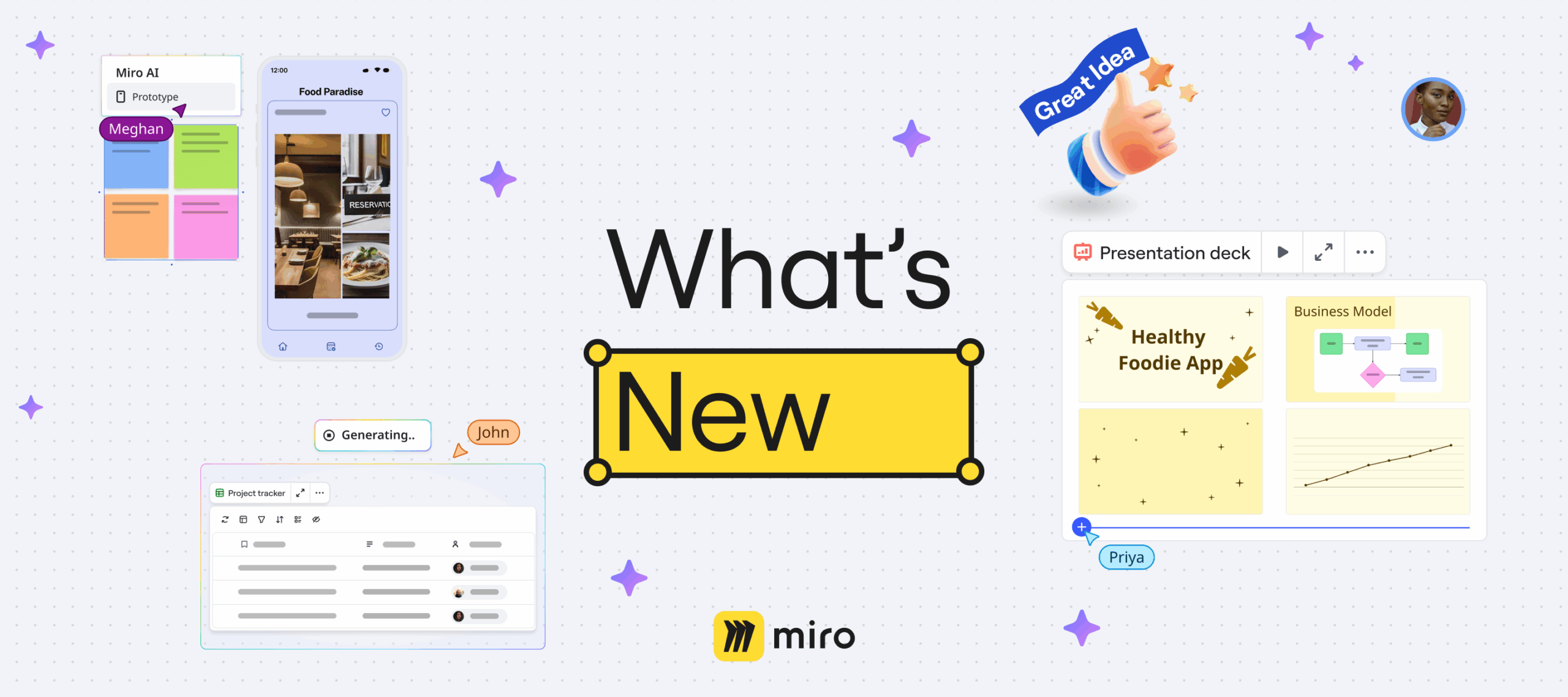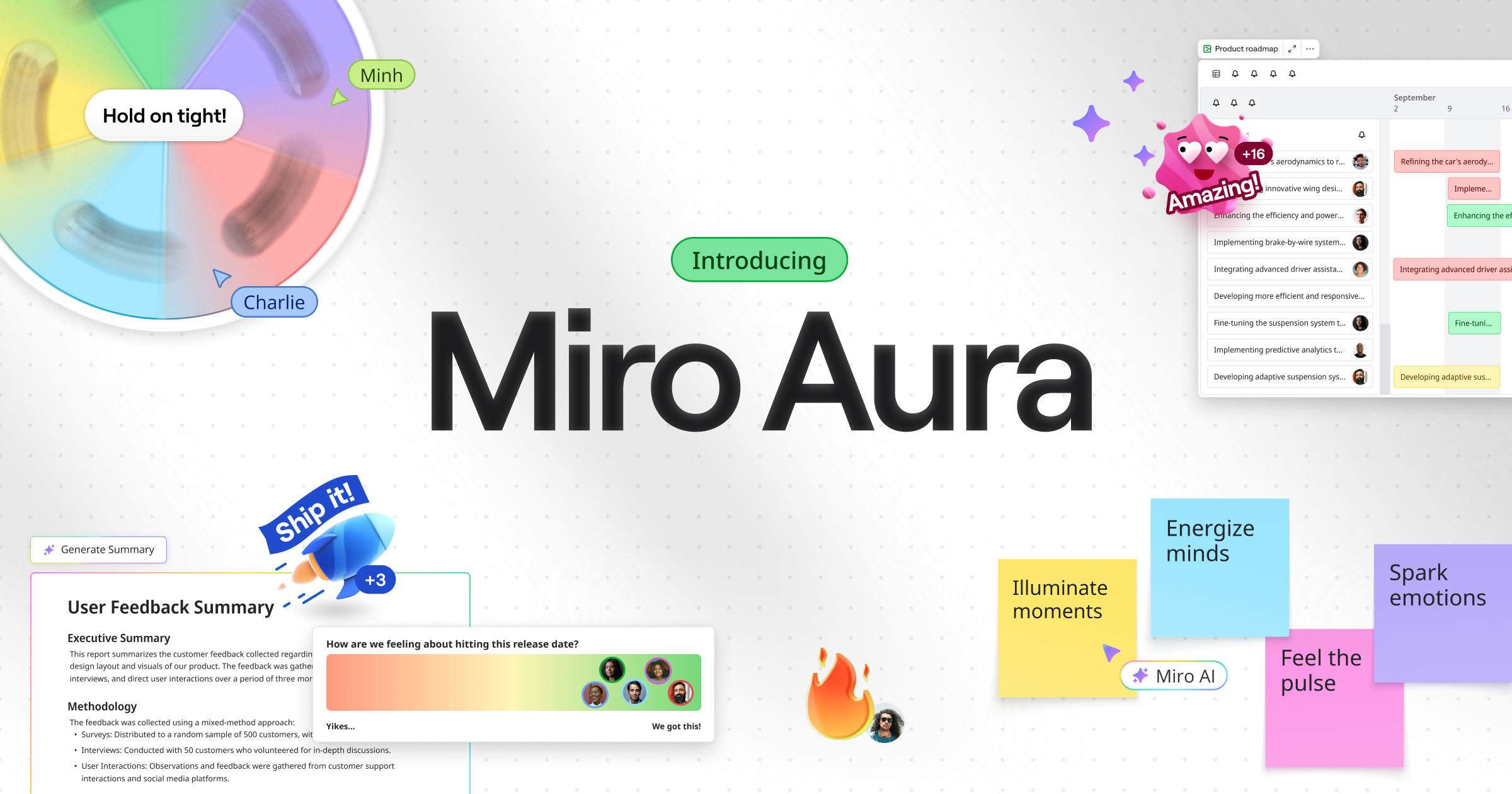This article was co-written by Philip Strain, Robert Schroeder, Peter Gould, Marcin Pająk, Andrew Hayward, and Stefano Baldan.
At Miro, we believe that diverse teams build better products. That’s why we’re deeply committed to creating a platform where everyone can collaborate with confidence.
Today, on Global Accessibility Awareness Day, we are excited to share our continued commitment to accessibility and how we’re proactively addressing key accessibility standards. This includes requirements established by the upcoming European Accessibility Act (EAA) and its transposition into national rules in the European Union.
In this post, we’ll take a closer look at how Miro is approaching the European Accessibility Act and embedding accessibility into our development processes. From enabling Miro employees, to our embedding accessibility into our core design principles, every aspect of our work includes rigorous testing to ensure an inclusive and empowering experience for all.
Miro’s approach to the European Accessibility Act
The European Accessibility Act (EAA) is a directive by the European Union that sets out accessibility requirements for a range of products and services, which will become enforceable through EU member state law starting 28 June 2025. The primary aim of the EAA is to harmonize requirements for providers of accessible products and services in member states and increase their availability for people with disabilities by establishing minimum principles.
At Miro, we have an established accessibility team whose mission is to remove the barriers that may prevent people with disabilities from collaborating effectively.
While we have previously written articles and published our approach to accessibility, one aspect that we’ve wanted to improve is how we engage and motivate Miro employees to progress accessibility. We’re always looking for ways to build a culture of accessibility at Miro, and below, you will find the steps we are taking to achieve this goal.
Embedding accessibility into our daily operations
Our approach to embedding accessibility into the daily operations of our teams is structured around four key pillars: enablement, automated testing, canvas accessibility, and accessibility excellence. Internally, we introduced our “Self-Serve Accessibility Strategy” earlier this year. The goal of the strategy was to provide Miro employees with the tools and resources they need to create accessible experiences for all users.
In practice, Miro teams are now able to independently design, build, test, and maintain accessible products.
Enablement
Our first pillar, enablement, ensures that all Miro employees have the tools they need to make our product accessible for all. Many large tech companies prioritize risk mitigation and potentially compromise on products that effectively meet user needs. But not at Miro. Here, we build for the user first and acknowledge our diverse customer base. We enable Miro teams to embed accessibility from the outset, recognising that designing and building with disabilities in mind – such as sight or hearing loss – is beneficial for everyone.
While our accessibility specialists are invaluable, we believe that a combination of the right tools, comprehensive education, and a supportive culture is crucial for success. This empowers individuals to verify their work confidently against accessibility standards, equips them with the necessary skills to create accessible services, and cultivates a deep understanding of accessibility’s importance. This encourages accessibility integration throughout every project phase.
Automated testing
Our second pillar, automated testing, makes it easier than ever for Miro employees to ensure accessibility. When it comes to accessibility testing, we recognize that prevention is better than cure. By using automated tests at multiple stages of the development process, we create several layers of defense to prevent, detect, and remediate accessibility issues as early as possible.
During development, we use extensive linting and accessibility unit tests to catch the most common compliance issues before they enter the codebase. At build time, we run end-to-end tests using real assistive technologies to ensure that changes don’t introduce unexpected regressions in the user experience. We also continually run page-level scans on fully rendered pages to identify any remaining issues.
Canvas accessibility
For the third pillar, we are looking directly at accessibility on the canvas itself. Unlike regular web content, the HTML-based Canvas does not provide built-in support for assistive technologies. To the browser, canvas content is read as pixels on the screen, without specific meaning. This means we have to build accessible capabilities specifically for the Canvas.
A significant part of our work toward making Miro accessible consists of building and maintaining the platform that allows the creation of accessible canvas content. Miro has accessible capabilities like:
- Keyboard-only navigation
- Reduced motion preferences
- Screen reader announcements
- Support for voice control software
- Labels for colors
- and more accessibility features and innovations
These are only a few examples of the areas that require custom accessibility support on the Canvas. It is fairly uncharted territory that requires a lot of research, innovation, and regular engagement with our customers and users to ensure the effectiveness of our solutions.
Accessibility excellence
Our final pillar is Miro’s commitment to accessibility excellence. Everything we do at Miro comes back to a dedicated focus on our users. Our Miro teams engage directly with organizations who leverage Mio to discuss and get feedback on our accessibility strategy. We also run regular user research sessions with people with disabilities to both inform future work and get feedback on the existing experience.
Learn more
As you can see, our commitment to the principles established by the European Accessibility Act is embedded into the daily operations of Miro. We are committed to delivering accessible capabilities so there is space for every great idea, not only on Global Accessibility Awareness Day, but every day.
For more information on Miro Accessibility, please explore our web page and our Help Center documentation. We recognize that accessibility is a journey, and so we welcome any feedback at accessibility@miro.com.




